#arte koots
Explore tagged Tumblr posts
Text
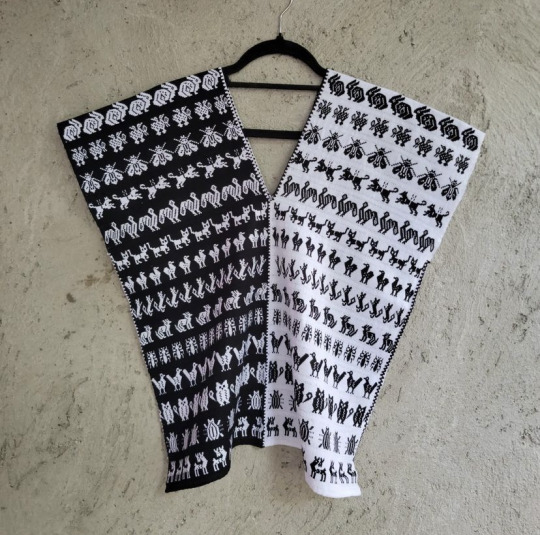
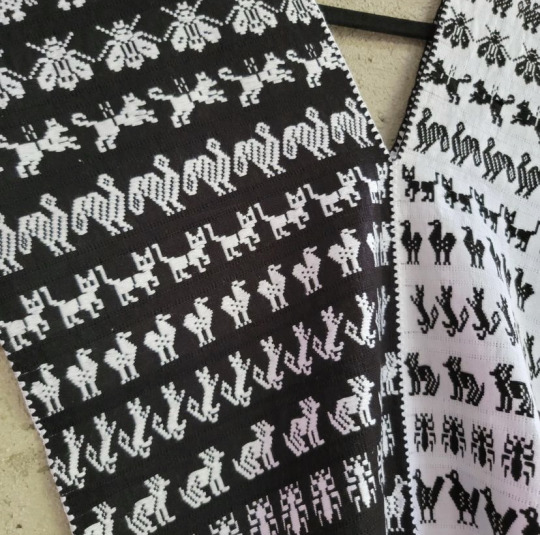
Mexican handmade blouse with animal print by ARTE KOOTS on Instagram.
#mexican fashion#tejida#top#blouse#waist loom#telar de cintura#fashion#handmade#handmade fashion#print#art#arte koots
6 notes
·
View notes
Text
i love my moots sm they are all so smart and talented and creative and pretty and and

#i love you guys did u know that#and the amount of respect i have for u people is through the roof like#playing instruments or studying medicine economics or graphic design like WHAT#WHAT DO U MEAN MY KOOTS DO THAT GHATS SO COOL???#speaking multiple languages or being good at art too#or when they are passionate abt their hobbies n interests my heart just warms up#let’s not forget about their writing skills ??? like scrumptious!!!!!#cries why am i being sappy rn#a is for axe’s rambles!!
25 notes
·
View notes
Text
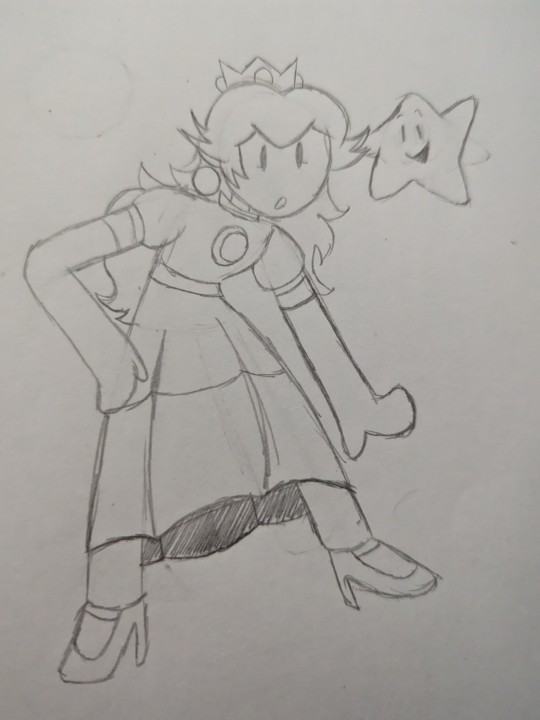


ive been popping off with paper mario art recently so heres some paper mario 64 doodles ive done this afternoon
37 notes
·
View notes
Note
I woke up today and chose chaos for the edud noteleks
I am writing the reason of ask backwards
(.skrow soahc woh s'taht ,elihw a koot siht seY) !sdrawkcab si stnemilpmoc ym ahahahhaahauwm syawynA .em sekam ti laref woh aedi on evah uoy ti ot tnaw I ,htooms dna gnizama s'ti tra ruoy evol I
>:)
Artistic recreation of my live reaction trying to read this at 2AM

The message says (I believe):
I love your art it’s amazing and smooth, I want to it you have no idea how feral it makes me. Anyways mwuahaha my compliment is backwards! (Yes this took a while, that’s how chaos works.)
You may have woken up and chosen chaos for me but this just means I will be sleeping with chaos, my differentiating time zone chaotic companion.
But, achk, thank you! I usually don’t answer asks right away (as seen with my ask binges) but this one gave me a chuckle and I figured I click do a shitty phone-and-finger doodle real quick for it. This is genuinely a wonderful end to my night, I’m intensely honored to have these compliments sent my way! Thanks you much, again o/
15 notes
·
View notes
Text

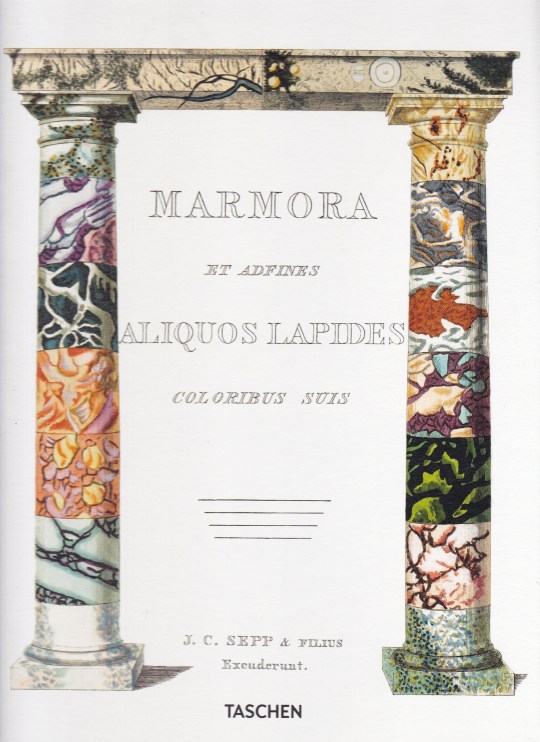

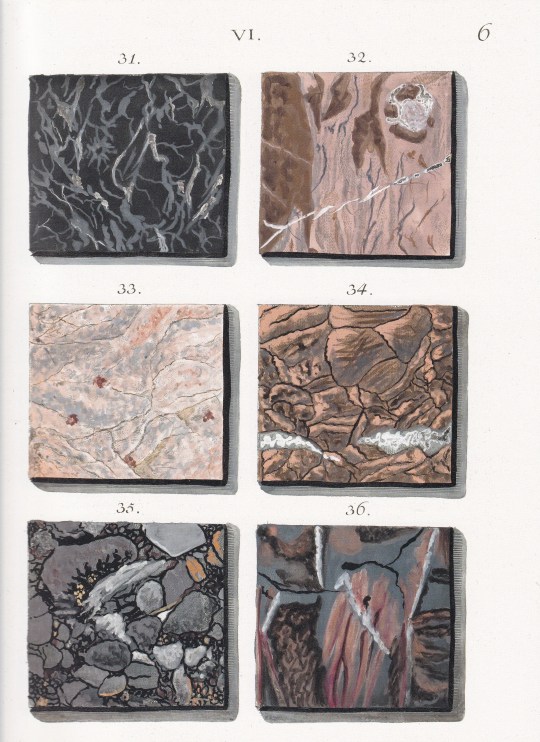
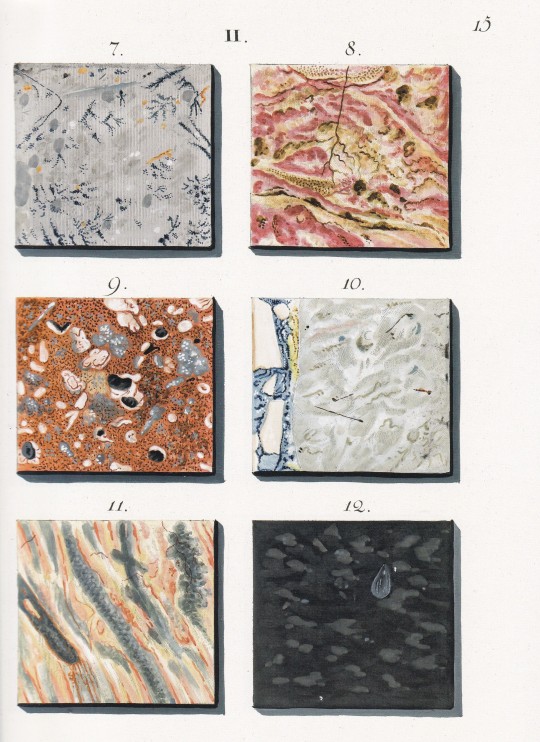



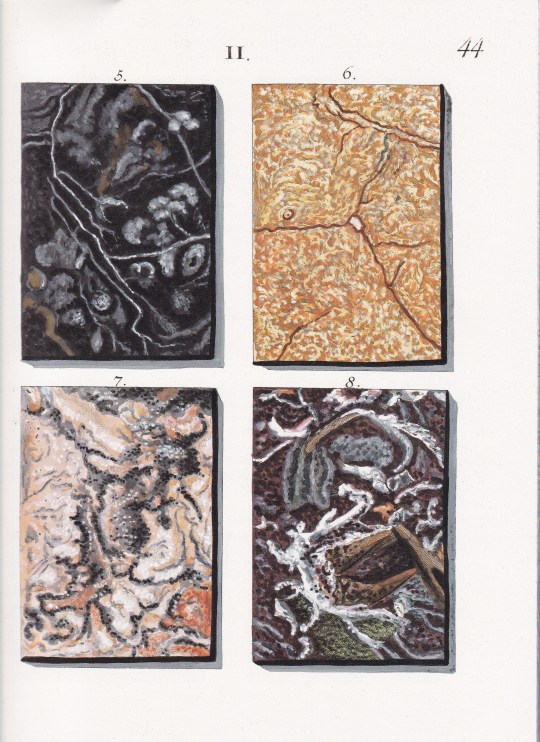



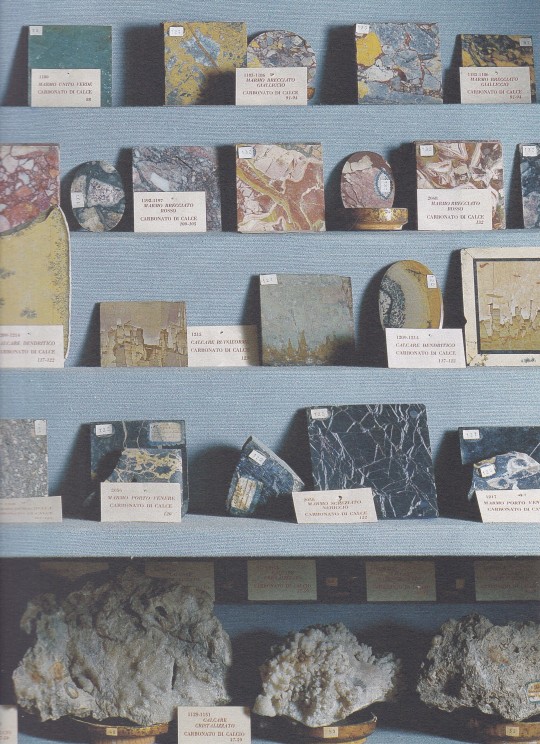
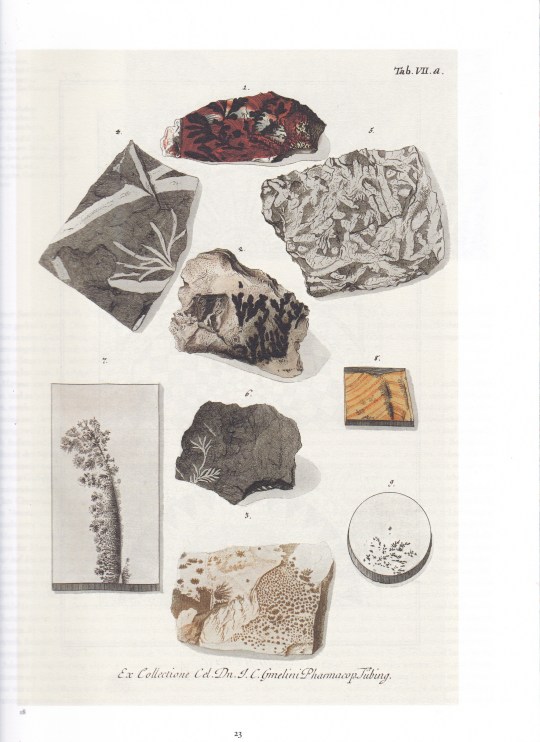

Jan Christian Sepp The Book of Marble
A representation of Marble Types 1776
Directed and produced by Benedikt Taschen
Geert-Jan Koot
Taschen , Cologne 2023, 312 pages, 32 26 cm, Hardcover in slipcase, 100 richly hand-coloured plates, ISBN 978-3836594349
euro 100,00
email if you want to buy [email protected]
Famous First Edition: First printing of 10,000 numbered copies
An exhaustive compendium of marble, Afbeelding der Marmor Soorten (A Representation of Marble Types) depicted 570 samples across 100 colour plates, accompanied by texts in five languages. Published in 1776 at the peak of the Enlightenment, it is regarded, rightly, as one of the finest illustrated scientific books of the era.Over the course of the 18th century, beautiful books that categorised, annotated, and illuminated the Enlightenment pursuit of learning across Europe had become increasingly popular. Knowledge was everything and everywhere, and these books provided it for those not wealthy enough to build their own personal collections of rare and exotic objects. Marmor Soorten, one such edition, took the standards of both aesthetics and categorisation to a whole new level.Jan Christiaan Sepp and his father Christian – himself a respected collector – had already earned a reputation for luxury publications on scientific themes, starting with Christian’s own Nederlandsche Insecten (Insects of the Netherlands). But it was his son who created the visual masterpiece Marmor Soorten, revising an existing German publication from 1775 by Adam Ludwig Wirsing. The result – published in 11 instalments to a print run of around 100 – was among the finest examples of its kind.Featuring new photography to depict the intricate details of the marble samples, this edition brings an unknown treasure back to relevance. The plates, each meticulously hand-coloured and arranged with painstaking precision, have an abstract-art feel that gives this volume an almost modern slant.This edition reproduces the pages from two copies of Marmor Soorten held at the State and University Library in Dresden and the Getty Research Institute in Los Angeles. Reprinting the work in full for the first time, The Book of Marble brings that rare blend of beauty and encyclopedic knowledge to a wider audience.
04/06/23
orders to: [email protected]
ordini a: [email protected]
twitter:@fashionbooksmi
instagram: fashionbooksmilano
designbooksmilano
tumblr: fashionbooksmilano
designbooksmilano
#The Book of Marble#facsimile edition#570 different marble types#marmi#marmora#designbooksmilano#fashionbooksmilano
8 notes
·
View notes
Text
I'm honestly about to quit art, everything keeps flopping and I see my koots all get famous by the second and idk what I'm doing wrong
0 notes
Text
A Journey through Time: Exploring Qatar's Historical Tours
Introduction: Qatar, a captivating country on the Arabian Peninsula, boasts a rich history that spans thousands of years. From ancient civilizations to bustling trade routes, the land has witnessed the rise and fall of empires, leaving behind a treasure trove of historical sites and landmarks. Embarking on a historical tour in Qatar is like stepping into a time capsule, where the past comes alive, and stories of bygone eras unfold. Join us on a fascinating journey through time as we explore Qatar's historical tours.
Al Zubarah Archaeological Site: One of Qatar's most significant historical treasures is the UNESCO World Heritage site of Al Zubarah. Located on the northwest coast, Al Zubarah was once a thriving pearl trading and fishing port during the 18th and 19th centuries. Today, visitors can explore the well-preserved ruins of this abandoned town, including its majestic fort, mosque, houses, and cobbled streets. Guided tours provide insights into the town's history, architecture, and the vibrant cultural exchange that took place during its heyday.
Museum of Islamic Art: Situated on Doha's Corniche, the Museum of Islamic Art is a testament to Qatar's rich Islamic heritage. Designed by renowned architect I.M. Pei, the museum houses an impressive collection of artifacts spanning 1,400 years of Islamic history. Visitors can admire exquisite calligraphy, ceramics, textiles, and rare manuscripts, showcasing the artistic and cultural achievements of various Islamic civilizations. Guided tours offer a deeper understanding of Islamic art and its significance in shaping Qatar's identity.
Sheikh Faisal Bin Qassim Al Thani Museum: Nestled in the heart of Qatar's desert, the Sheikh Faisal Bin Qassim Al Thani Museum is a captivating showcase of the country's heritage. The museum displays a vast collection of artifacts, including vintage cars, traditional Qatari clothing, weaponry, and ancient manuscripts. Visitors can delve into Qatar's Bedouin culture, explore the Sheik's private collection, and learn about the customs and traditions that have shaped the country's history. Guided tours provide a personal touch, offering insights into the Sheikh's passion for preserving Qatar's heritage.
Barzan Towers: Situated on the outskirts of Doha, the Barzan Towers stand as sentinel reminders of Qatar's defensive past. Built in the late 19th century, these watchtowers served as strategic lookout points and guardians of the country's coastline. Visitors can climb the towers and marvel at the panoramic views of the surrounding landscape, while knowledgeable guides share tales of the towers' role in safeguarding Qatar's shores from maritime threats.
Al Koot Fort: Located in the heart of Doha's bustling Souq Waqif, Al Koot Fort provides a glimpse into Qatar's recent history. Built in the early 20th century, this beautifully restored fort served as a police station and is now a museum dedicated to Qatar's cultural heritage. Visitors can explore its exhibits, which showcase traditional Qatari handicrafts, historical photographs, and artifacts. Guided tours illuminate the fort's significance in preserving Qatar's heritage and offer a window into the country's more recent past.
Conclusion: Exploring Qatar's historical tours is like embarking on a captivating journey through time. From the ancient ruins of Al Zubarah to the contemporary treasures housed in museums, each site tells a unique story of Qatar's rich heritage. By immersing yourself in these historical experiences, you can gain a deeper appreciation for the country's culture, traditions, and its enduring connection to its past. So, pack your curiosity and embark on a journey through time as you discover the historical wonders of Qatar.
0 notes
Text
Complete the Marriage Match-Making Course by Vinayak Bhatt
Marriage Match Making Course by Vinayak Bhatt Limited Seats Available! Join Now!
Are you ready to become a master in the art of Marriage Match Making? Vinayak Bhatt, the renowned expert in the field, invites you to join his comprehensive course designed to equip you with the knowledge and skills to excel in the world of matchmaking.
In this 8-lecture course, Vinayak Bhatt will take you on a transformative journey, covering everything from understanding compatibility factors to effective communication techniques. Whether you're an aspiring matchmaker or someone looking to enhance your personal relationship skills, this course is perfect for you.
Course Highlights: Lecture 1: Teachings of Acharya Varahamihira on Marriage Lecture 2: Teachings of Rishi Saunaka on Marriage Lecture 3: Secrets of Ashtkoot Lecture 4: Remedies Of Nadi Dosh, Manglik Dosh & Other related dosh Lecture 5: Muhurta Selections & Timing of Marriage Lecture 6: South Indian Village Astrologer System of Marriage Matching Lecture 7: Rajju Koot & Mahendra Koot Lecture 8: My Practical Approach to Marriage Matching
Don't miss out on this incredible opportunity! Enroll now and gain invaluable insights into the world of marriage matchmaking. Seats are limited, so secure your spot today.
To enroll, visit [https://saptarishisshop.com/marriage-match-making-course] or contact us at [+91-9819957779]. Join the elite league of matchmakers and embark on a rewarding journey today!
0 notes
Photo

‘When i think we’re all doomed and watch the world burn
I remember licking your face
and everything is alright again for a while’
2 notes
·
View notes
Photo
Everything about this comic is adorable! But I think my favorite thing about it is Tayce T.'s design: she just looks so soft and huggable here. <3 She certainly is one of the sweetest little old ladies in video gamedom.
I also love the idea of Peach doing secret little acts of kindness like this!
(Koopa Koot though...what a jerk! XD)






Right, I forgot to post my full entry for the Paper Mario zine! Please enjoy this small comic about food in the n64 game, and the people who make it and appreciate it.
#super paper mario#spm#cook book#reblog#art#cooking#baking#food#tayce t#princess peach#mario#koopa koot#yoshi#pm twink#nintendo#nintendo wii#wii#paper mario#paper mario ttyd#inspiration
1K notes
·
View notes
Text
Creating a tumblr since twitter is combusting just in case! Please have patience with me, I don’t know much of tumblr etiquette yet 🙏
Have a video of my vtuber as a gift 💖
Yog-Sothoth was let into our realm through an unknown force freeing him! Now he’s created a human skin suit to walk among them “undetected”, but he can’t read and is quite the idiot.
… At least, that’s the persona he’s giving off : )
You can call me Koo, Koots, K2, Kootie, Koo Koo Puffs, Kootyloo, or whatever other kind of nickname you want! Though the first option is my normal :>
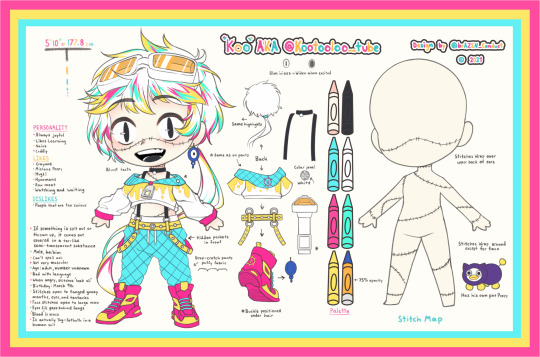
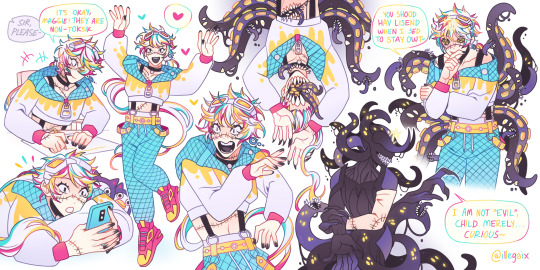

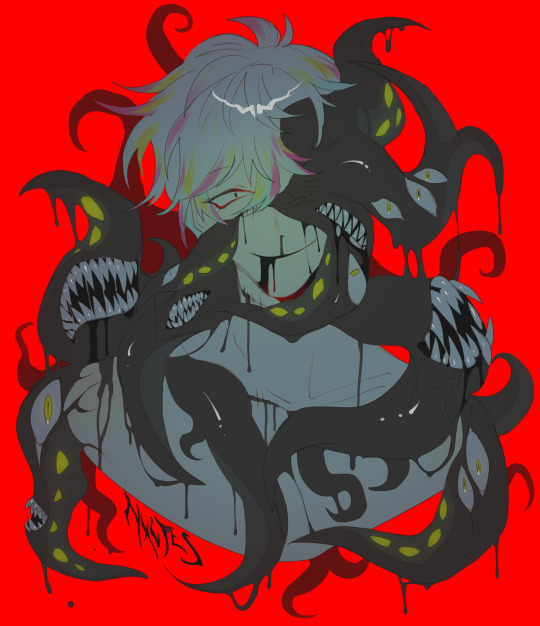
Art Credits (in respective order): Myself, @Illegaix, @undue_odium, @nxctes
Model ママ: @SaiwoProject (art)
Model パパ: @ransomvt (rigging)
Art: #Koorayola
NSFW: #Kootoolewd
My Links:
https://www.twitter.com/kootooloo_tube
283 notes
·
View notes
Photo

The Venerated Mahatma Koot Hoomi, also known as Kuthumi or K. H., is one of the great Masters of Ancient Wisdom. Incarnating again and again, the compassionate Savior’s mission is to aid humanity in their spiritual evolution. In His last incarnation as Master Koot Hoomi, He was instrumental in the founding of the Theosophical Society. Alongside Lord Jesus Christ, the Venerated Mahatma Koot Hoomi now serves as World Teacher in the spiritual Hierarchy for this planet. Master Koot Hoomi is one of the Seven Lords of Rays in the Hierarchy closest to humanity. He is the Lord of the Second Ray of Divine Illumination. His predominant quality is wisdom, and His specific sphere of influence is culture, particularly in religion, art, and education. Master Koot Hoomi by Talon Abraxas
80 notes
·
View notes
Photo

Shes gonna be fine
#my art#my oc#im baaaaaaaaaaaaaaaaaaaaaaaaack#idk what imma name her#but#shes in college#and she does cam shows to get money#and she koot#af#fmu
79 notes
·
View notes
Text
Why it is important to match kundli before marriage in India.

The following stage just after she/he says "OK" and guardians of both the gatherings concur is the critical and compulsory course of Kundli Matching. In an Indian marriage, this progression is viewed as consecrated and is an approach to matching the horoscopes and knowing the prophetic similarity of the Bride and the Groom. While to guardians and other old individuals from the family Kundli Matching is a significant figure the creation of a marriage, the greater part of us know nothing about its actual embodiment.
Kundli Matching has been an obligatory practice since ages. Practically the entirety of our marriage making processes right from our predecessors have been set apart by the presence of this custom. It is accepted that when the mysterious birth diagrams a.k.a. "kundlis" match, alongside every one of the "yogas" and the "doshas", the way that the forthcoming Groom and the Bride will lead a blissful, good and a tranquil life can be guaranteed.
Allow us to get to find out about this special and significant custom and its importance in Vedic crystal gazing.
The Basic Requirement:
While looking at the horoscopes of the Bride and the Groom, "36 Gunas" are considered to pass judgment on the similarity between the couple. This is motivation behind why Kundli Matching is additionally called Guna Milan. There are a particular number of focuses that are checked to investigate/foresee the existence of the marriage. These focuses are called Ashta Koot and are recognized as follows:
Nadi: 8 Points
Bhakoot: 7 Points
Gana: 6 Points
Maitri: 5 Points
Yoni: 4 Points
Tara: 3 Points
Vasya: 2 Points
Varna: 1 Point
Together, these are the significant 36 Gunas that are thought about.
These spin around the basics of a blissful and a satisfying life like mental similarity, Mangalik dosh, the life span of the relationship, similarity, kids, sexual interests and wellbeing. It is expressed that no less than 18 Gunas should coordinate. Really at that time the marriage is taken ahead and affirmed.
The Importance of Gunas:
An individual's horoscope and his introduction to the world graph a.k.a. his kundli portrays a ton about the individual's life. This incorporates his past, present and future as well as his demeanor and character. The birth outline is ready concerning the places of the planets and their developments which educate a ton regarding the individual's tendency and are known to impact the relationship up generally. With the matching of kundlis, and hence, gunas, the couple's similarity is determined. This permits the relatives to find out about their future together and the predetermination of their marriage.
The Importance of Kundali Matching in an Indian Matrimony:
The idea of Kundli Matching essentially flourishes in India and is treated in a serious way in an Indian marriage. Through this, the principal thought is to guarantee an upbeat and a prosperous wedded life. Furthermore, the angle that supports the dynamic cycle is the matching of no less than 18 gunas out of 36. While the matching of 18 gunas out of 36 is the fundamental necessity, the one where 26 gunas match is viewed as the "best match".
The Art of Living Matrimony is one among those uncommon marriage locales in India that urges people to interface on a profound level. What's more, since Kundli Matching is an unquestionable requirement in an Indian wedding, we support the most common way of matchmaking by permitting people to meet individuals with comparative interests. We put stock in giving our clients the space, time and the security to cooperate and get to know one another. We speed up the most common way of meeting a potential life accomplice that shares the comparative arrangement of interests by knowing your inclinations first. This extends the extent of winding up with the individual you like as well as affection. The climate here is protected, sound and straightforward when contrasted with most Indian marriage locales.You can visit Myastron for more details.
2 notes
·
View notes
Photo

What if the Arabs took the flag of Saudi as their base instead of the Arab Revolt flag
from /r/vexillology Top comment: The writing on the flag of Jordan: النشامة الهواشمة (the Hashemite Nashama) Hashemites are the prophet Muhammed's (PBUH) lineage and also the ruling dynasty. The Nashama are what the locals call themselves it means the brave in both aramaic and Nabatean (and I think Hebrew) the ancient languages of Jordan. The colours are the colours of the Jordanian shmagh which is a symbol of Jordan. The dagger is only found belonging to the Bedouin tribes of Petra and the Christian bedouins of Madaba The writing on the flag of Kuwait: ابناء الكاظمة و الكوت (the children of Kazima and Koot) which are the old names of Kuwait The chains represent the battle of 'That As Salalsel' (of the chains) which was the first Muslim victory against non arabs which was fought in modern Kuwait and is a big part of Kuwaiti culture The circle in the middle represents the pearl diving economy that existed in Kuwait for 600 years before the discovery of oil in the 30s The colours are the colours of the flag of the Fort of Kuwait which is considered to be the first flag and both the capital and the country are named after this "fort" The writing on the flag of Iraq: بلاد الرافدين (the Mesopotamian nation) which is the name that all native Iraqis give to Iraq. The sword is the sword of Ali RA which was the caliph who moved the Islamic capital from Mecca to Kufa and is a big part of their culture especially with the Shia The two blue lines are the Tigris and Euphrates. The yellow stripe represents the Kurdish sun which is a symbol of their people. The white was the main colour of the proposed flag after toppling the Saddam Regime which was rejected (I don't know why though) The writing on the flag of Qatar: المعاضيد و العنابي (The Ma'adeed and the Enabi). The Ma'adeed were the first sub kabeela from the tameem kabeela of Eastern Arabia who are believed to be the first Qataris. The Enabi is the colour of their flag and what some Qataris call themselves and is a symbol of the nation for its uniqueness (it means grape like). The sword is the one special to Qatar for its unique handle and bended guard The colours are the Enabi colours which are also found in the modern flag The writing on the flag of Bahrain: العتوب الدلمون (The Dilmun Otoob). The Otoob are an Arab tribe found in all gulf nations due to them being one of the biggest families from the Tameem tribe of the East. However they are majorly found in Bahrain today and the rulers descend from them and the major financial strong families come from them which is something only found in Bahrain whereas in Kuwait and Saudi they are considered as bedouins. The Dilmun are the ancient civilisation of Bahrain that were one of the first real settlements in Arabia unlike the nomadic majority in the rest due to its geographical importance of connecting Mesopotamia and the Persians to India. The colours are the same as the current flag. The sword is similar to the Qatari one but what makes it special is the case which is shown on the flag that is only found in Bahrain and it doesn't have the Qatari handle. The writing on the flag of Oman: نصر من الله و فتح قريب (Help from god and imminent victory). Which is one of the most famous verses in the Quran (61:13). It was the writing on the old Omani flag which I believe to be the inspiration behind the Saudi flag since it had Islamic writing on the top and a sword on the bottom way before Saudi was a thing. The Al Saud are believed to originate from the South East of today Saudi Arabia which is very close to Oman. The colours were to colours of the old flag and the shapes are the same as the old flag The daggers are the symbol of Oman and make a big part of their culture and is found every where in Oman flags and logos The writing on the flag of Yemen: اصل العرب (the origins of the Arabs). Which is a famous Arab saying about Yemen and is something that Yemenis today bring up alot as they are the original Arabs and it is a big part of their pride even though the modern Yemenis have a lot of African influence. The colour is the blue from the old Yemeni Flag which only represents the South but I used it because I kinda got bored from the red. The sword was the exact sword on the old northern flag and the Khanjar is the symbol of Yemen and is a big part of their clothing and traditional dancing The writing on the Syrian flag: حبذ الشام من ارض و وطن (There is no better land nor nation than the sham). The sham is the Arabic word for the Levant however the Syrians adopted it to be about themselves and is one of the names of Damascus and overall Syria. The symbol is Islamic Calligraphy which was at its peak in Syria under the Umayyads and shaped Islamic art forever. The sword is the Ummayyad sword which represents the Umayyads who made Damascus the Islamic world capital from Kufa and are responsible for the Arabisation of Syria and most arabised countries. The colour is green since the green in the original Arab revolt flag is believed to be for the Umayyads. The writing on the Lebanese flag: ابناء الجبل (the sons of the mountain). The mountain is referring to mount Lebanon which the country is named after and a lot of their culture stems from, even though they are very religiously diverse this culture unifies them. The Cedar tree which is most commonly found on the mountain and is the symbol of Lebanon The sword is a traditional Phoenician sword which were the civilisation based in Lebanon The red is the red on their flag The writing on the Palestinian flag: الارض المقدسة (the Holy land). Which represents all Abrahamic religions. The olive branch represents the major olive obsessive culture of Palestine. Before the large scale Jewish immigration almost 54% of all arable land was dedicated to planting olive trees which the Palestinians especially the Muslims believe to be holy due to it and figs being mentioned in the Quran and multiple times in Hadeeth. The traditional Nabulsi soap which is very famous with Palestinians is made with olive oil and a lot of the Falahi social class of Palestinians believe it has healing abilities. Its sad to see that 800, 000 olive trees were uprooted especially when remembering its the Roman centuries ago who planted them. The sword is the sword of Saladin who is most notably known as the person who defeated the Crusaders in Jerusalem and is a symbol of Palestinians even though he was kurdish, who even the Christian Palestinians like due to him kicking out the crusaders who oppressed the local orthodox Christians (he is also known for removing the Jewish ban placed by the crusaders in Jerusalem). Te pattern is the kaffiyeh which even though it is something only the Falahis wore (pre the mandate since after everybody wore it as symbol against the Brits) especially when farming in the heat which is seen as a symbol of all of Palestine. I forgot the UAE (I'm sorry) (if you have any ideas for them please respond)
25 notes
·
View notes
